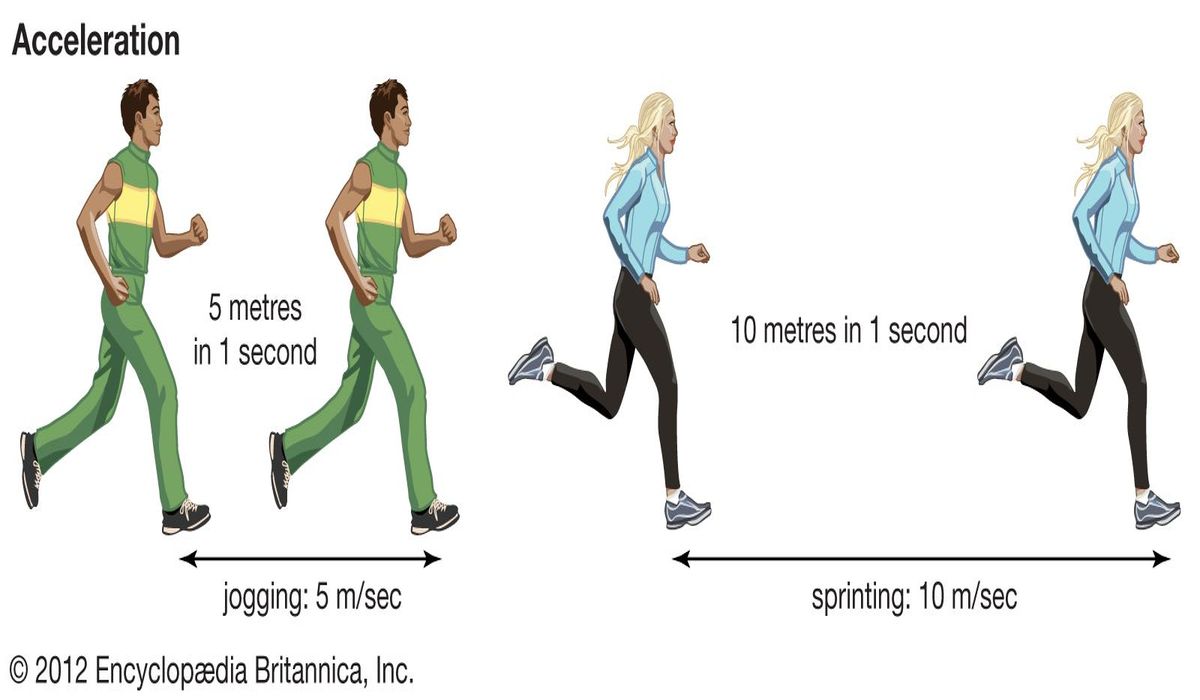
Velocity isn't just a fancy word for speed. It's a concept that blends speed with direction, making it a key player in physics. Ever wondered why some roller coasters feel faster than others, even if they have the same top speed? That's velocity in action! Understanding velocity can help you grasp how objects move, whether it's a car zipping down the highway or a planet orbiting the sun. This list of 30 facts will break down everything you need to know about velocity, from its basic principles to its real-world applications. Buckle up, because you're about to get a crash course in one of physics' most exciting topics!
Key Takeaways:
- Velocity is more than just speed; it includes direction. It's like knowing not only how fast you're going, but also where you're headed. Velocity helps us understand motion in a whole new way!
- From cheetahs to blood flow, velocity is all around us in nature. It's not just about how fast things move, but also the incredible forces and speeds they can reach.
What is Velocity?
Velocity is a fundamental concept in physics. It describes the speed of something in a given direction. Unlike speed, which only tells how fast an object is moving, velocity tells both how fast and in which direction.
- Velocity is a vector quantity, meaning it has both magnitude and direction.
- The SI unit for velocity is meters per second (m/s).
- Speed is the magnitude part of velocity, but without direction.
- Average velocity is calculated by dividing the total displacement by the total time taken.
- Instantaneous velocity is the velocity of an object at a specific moment in time.
How is Velocity Different from Speed?
While speed and velocity are often used interchangeably, they are not the same. Speed is a scalar quantity, meaning it only has magnitude. Velocity, on the other hand, includes direction.
- Speed can never be negative, but velocity can be.
- Speed is the distance traveled per unit of time, while velocity is displacement per unit of time.
- Speed does not change if the direction changes, but velocity does.
- Velocity can be zero if an object returns to its starting point, even if it has traveled a distance.
Calculating Velocity
Understanding how to calculate velocity is crucial for solving many physics problems. The basic formula involves displacement and time.
- The formula for velocity is ( v = frac{d}{t} ), where ( v ) is velocity, ( d ) is displacement, and ( t ) is time.
- Displacement is the shortest distance from the initial to the final position.
- Time is the duration over which the displacement occurs.
- Vector addition is used when combining velocities in different directions.
- Relative velocity is the velocity of an object as observed from another moving object.
Real-World Applications of Velocity
Velocity is not just a theoretical concept; it has practical applications in everyday life and various fields.
- Sports: Athletes use velocity to improve performance, like sprinters focusing on their speed and direction.
- Navigation: Pilots and sailors use velocity to chart courses and avoid obstacles.
- Engineering: Engineers calculate velocity to design safer and more efficient vehicles.
- Astronomy: Astronomers measure the velocity of celestial bodies to understand the universe's expansion.
- Meteorology: Weather forecasts use wind velocity to predict weather patterns.
Interesting Facts About Velocity
There are some fascinating aspects of velocity that go beyond basic definitions and calculations.
- Light has the highest velocity in the universe, traveling at approximately 299,792 kilometers per second.
- Sound travels at a velocity of about 343 meters per second in air at room temperature.
- Escape velocity is the speed needed to break free from a planet's gravitational pull.
- Terminal velocity is the constant speed that a freely falling object eventually reaches.
- Doppler effect involves changes in frequency or wavelength due to the relative velocity between a source and an observer.
Fun Facts About Velocity in Nature
Nature provides some of the most intriguing examples of velocity in action.
- Cheetahs are the fastest land animals, reaching velocities up to 112 kilometers per hour.
- Peregrine falcons can dive at velocities exceeding 320 kilometers per hour.
- Ocean currents can have velocities of up to 2.5 meters per second.
- Rivers can flow at velocities ranging from 0.5 to 3 meters per second.
- Human sneeze can expel air at a velocity of about 160 kilometers per hour.
- Blood flow in the human body has an average velocity of about 0.33 meters per second.
Speeding to the Finish Line
Velocity isn't just a fancy term for speed. It’s a crucial concept in physics that helps us understand how objects move. From the way athletes run to how planets orbit the sun, velocity plays a role in our daily lives. Knowing the difference between speed and velocity can make you sound pretty smart at parties too!
Remember, velocity includes direction, making it more specific than speed. Whether you’re a student, a teacher, or just curious, grasping these facts can give you a better appreciation of the world around you. So next time you’re in a car or watching a game, think about the velocity involved. It’s everywhere, and now you know a bit more about it. Keep these facts in mind, and you’ll always be a step ahead in understanding motion.
Frequently Asked Questions
Was this page helpful?
Our commitment to delivering trustworthy and engaging content is at the heart of what we do. Each fact on our site is contributed by real users like you, bringing a wealth of diverse insights and information. To ensure the highest standards of accuracy and reliability, our dedicated editors meticulously review each submission. This process guarantees that the facts we share are not only fascinating but also credible. Trust in our commitment to quality and authenticity as you explore and learn with us.
